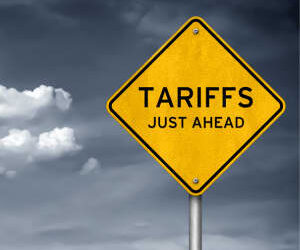By Professor David Babbel from the Wharton School at the University of Pennsylvania.
Timing risk is particularly troublesome when one enters retirement. Suppose your client needs $2,000 fortnightly to cover their retirement expenses. You sell your client an account-based pension each period in order to cover their expenses. When the markets are down, you need to sell more assets in order to meet those needs. If the markets then go back up, you have fewer assets to ride up with the market. Thus, although your assets have gone up in price, you now have fewer of them available to cash in to meet your expenses. Then when markets recede again, you have to sell an inordinate amount of assets to meet your recurring needs. These fluctuations are likely to continue throughout retirement.
The cumulative effect of volatility during retirement can be disastrous. It is well known that if assets are left exposed to volatility and a significant downturn occurs early in retirement, it is very difficult to ever recoup the losses, which can have a huge impact on retirement spending. A comprehensive set of simulation studies by Canadian Jim Otar showed that a $1 million retirement portfolio composed of 40 per cent stocks and 60 per cent bonds, designed to last at least 30 years under typical withdrawal rates where the portfolio earned average, albeit steady rates of return during retirement actually failed 87 per cent of the time to make it through the 30 years, even though the average returns were equal to the targeted returns. His simulation was based on the actual sequences of returns experienced in the USA from 1900 to 2000, and those 70 sequences of 30 years each exhibited more unfavourable sequences than favourable, as described above.
The retirement portfolio was often exhausted many years before the 30 years. When another portfolio of 100 per cent stocks was tested over the same periods, it failed to last the full 30 years 89 per cent of the time. In the worst case, the $1 million portfolio was completely exhausted after only six years. In most cases the portfolio was depleted in less than 20 years. If average returns had been steady, the portfolio easily would have lasted the full 30 years. But when the same average returns were achieved, in their actual unsteady sequences, they didn’t last long enough in most cases. Much of this underperformance was due to the adverse effects of adverse timing risk. (His simulations many of which are chronicled at http://retirementoptimizer.com for interested readers.)
Bottom line: volatility can be hurtful toward maintaining sufficient value in a retirement portfolio of volatile assets to last through retirement. Assets with steady values don’t suffer from this timing risk. Of course, the average returns over time on instruments featuring steady returns may differ from those on securities exhibiting unsteady returns, but the risks are also different, and a person has to evaluate the options based on their tolerance for risk.
Caution: the simulations are based on past returns, and while they illustrate the past effects of unhelpful sequences of market fluctuations, the future may be far different.
Extract from David Babbel and CommInsure whitepaper, Retire stronger – new strategies towards a comfortable retirement. You can access the paper via www.comminsureadviser.com.au/retirement
Disclaimer:
General advice only. This material has been prepared without taking into consideration your personal objectives, financial situation or needs. Before acting on this advice, you should consider whether it is appropriate for you. You should read the relevant Product Disclosure Statement before making a decision to buy or continue to hold a product. The Colonial Mutual Life Assurance Society AFSL 235035.





